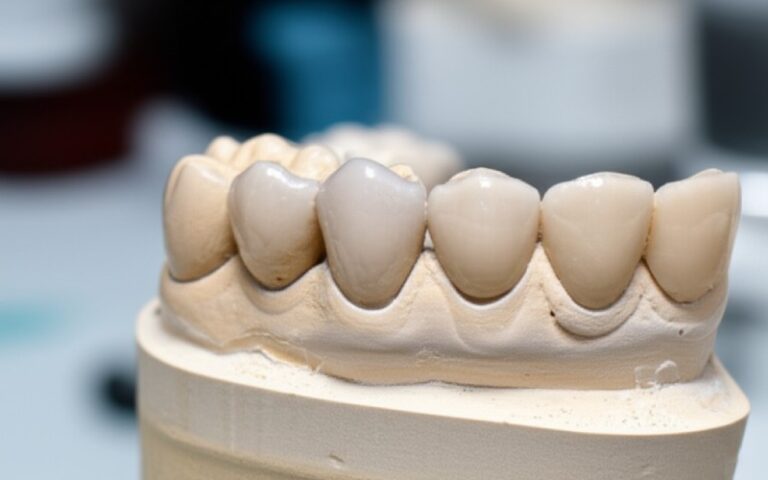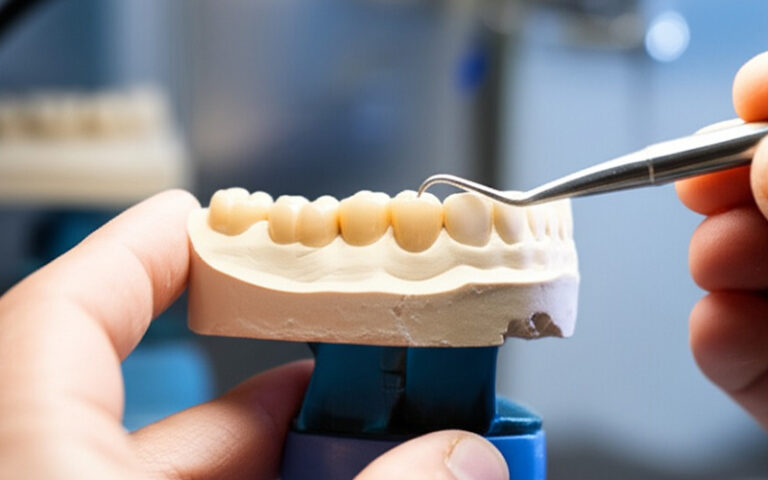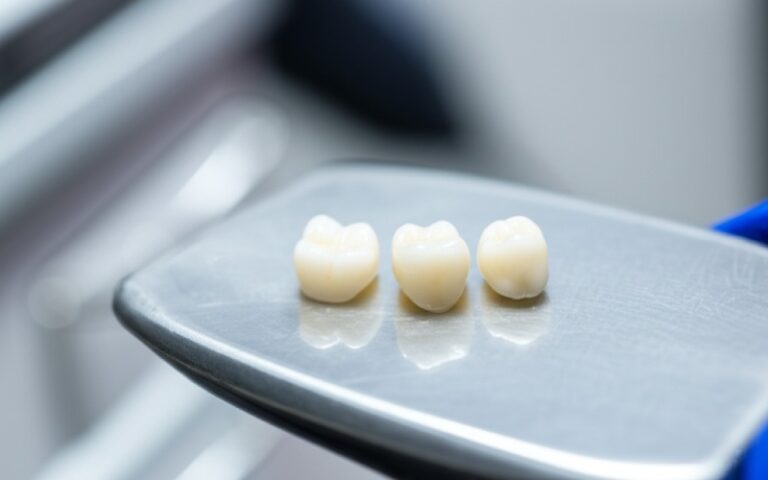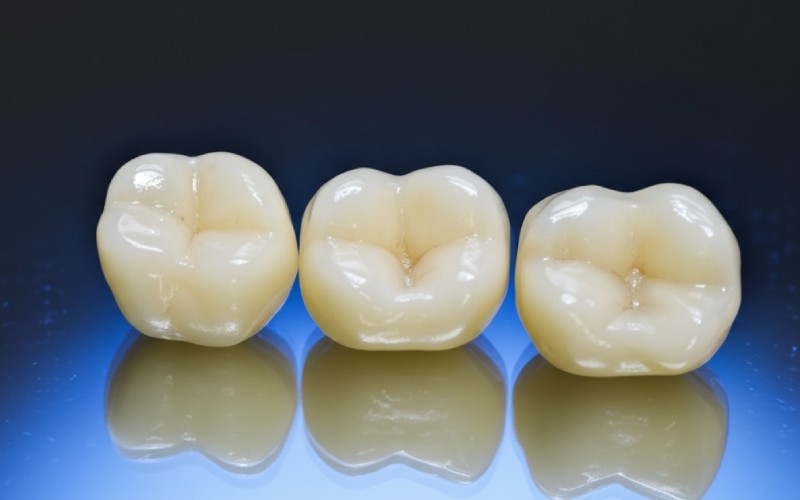
E.max vs Zirconia kroner: Din guide til en holdbar dental restaurering
We are going to break down the big E.max vs Zirkonia debate into simple, easy-to-understand pieces. By the end, you’ll know exactly what questions to ask your dentist. You will feel confident choosing the right material for your new tooth restoration. This guide will help you understand the key differences in strength, looks, and use for each type of crown.
Indholdsfortegnelse
What Are These Dental Crowns Made Of?
Let’s start with the basics. When you need a crown, you’re getting a cap that covers your existing tooth. But not all caps are made the same. The two most popular types of dental crowns today are E.max and Zirconia. They are both advanced, all-ceramic options that have left traditional porcelain and metal crowns in the dust. You won’t find any ugly metal lines with these.
An E.max crown is made from a material called lithium disilicate. Think of it as a special type of glass-ceramic. It’s known for looking amazing. Zirconia, on the other hand, is made from zirconium dioxide. This is a white, powdered metal oxide that is incredibly strong. You might hear it called ceramic steel. So, you have one material famous for its beauty (E.max) and another famous for its power (Zirconia). This is the main difference that will guide your choice of crown material.
Which Crown Looks More Natural? The Big Question of Aesthetics
We want a crown that blends in perfectly with our natural teeth. For this, we need to talk about translucency. Translucency is how much light can pass through an object. Your natural tooth enamel has a certain level of translucency, which gives it that lifelike look.
The E.max crown is the winner in this area. Because it’s a glass-ceramic, E.max has amazing translucency that very closely mimics a natural tooth. This makes it an aesthetically pleasing choice, especially for front teeth that everyone sees when you smile. A Zirconia crown is more opaque, meaning less light passes through. While modern zirconia has improved a lot, it still struggles to match the natural appearance of an E.max crown. So if your number one goal is a perfect match for your other teeth, E.max is often the top choice.
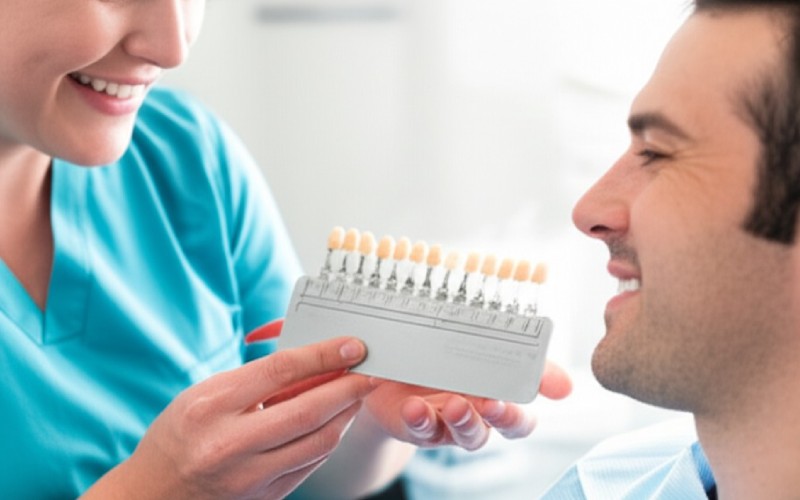
Are Zirconia Crowns Really the Strongest Option?
Now let’s talk about power. When you need a crown on a back tooth, like a molar, strength is everything. Your molars do all the hard work of chewing. They need a crown that can handle a lot of pressure and wear and tear without breaking. This is where a zirconia crown truly shines. The strength and durability of zirconia are off the charts.
We measure material strength in something called megapascals, or MPa. An E.max crown has a strength of around 360 to 500 MPa. That’s strong, but a zirconia crown can have a flexural strength of over 1,000 MPa. That is why zirconia is a fantastic material for a crown on a molar. If you have a habit of grinding your teeth, a condition called bruxism, your dentist will almost certainly recommend zirconia. Its high strength makes it highly durable and resistant to chipping or cracking from the force of bruxism.
What is the Main Disadvantage of Each Crown Material?
Nothing is perfect, and that includes these advanced dental materials. Each one has a disadvantage you should know about. For E.max, the main drawback is its strength. While it’s strong enough for most uses, it’s not as tough as zirconia. This means an E.max crown is more likely to fracture if it’s placed on a back molar or if you have bruxism. It’s a trade-off: you get top-tier beauty but give up some raw power.
For zirconia, the main disadvantage used to be its looks. The older types of zirconia were very bright white and opaque, which could look unnatural. Modern zirconia materials have gotten much better, but they can still be a bit less lifelike than E.max. Another concern with the very hard zirconia is that it could wear down the opposing teeth. However, today’s monolithic zirconia is polished to be very smooth. This greatly reduces the risk of damage to the natural tooth it bites against.
How Does the Tooth Preparation Differ for E.max vs Zirconia Crowns?
Before you get a crown, your dentist has to prepare your tooth. This means removing some of the outer tooth structure to make room for the new crown to fit. Dentists and patients always want this tooth preparation to be as minimal as possible. We want to save as much of the healthy tooth as we can. This is what we call conservative tooth preparation.
Here, the choice between the two materials matters. An E.max crown can be bonded directly to your tooth enamel. This bond is very strong. Because of this, a dentist can sometimes prepare the tooth more conservatively for an e.max restoration. They are also used for a facetter or an inlay, which require less tooth removal. A Zirconia crown is usually cemented on, not bonded. Because it is so strong, a very thin zirconia crown can be made. But to ensure a good fit, the preparation might be a little different. Your dentist will know the best way to prepare your tooth for either material.
Are E.max and Zirconia Crowns Safe and Biocompatible?
One of the best things about modern restorative dentistry is the focus on safe materials. For years, crowns made with metal were common. The problem is that some people can have allergic reactions to the metals used. This is one reason why options like E.max and Zirconia are so popular. They are both considered to be very biocompatible. This is a fancy word that just means they get along well with your body and are not likely to cause allergies or other issues.
Both E.max (lithium disilicate) and Zirconia (zirconium dioxide) are metal-free ceramic materials. This is great news for people with metal sensitivities. They won’t cause dark lines at the gumline like some old porcelain-fused-to-metal crowns. You can feel confident that choosing either an E.max or a zirconia restoration is a safe, healthy choice for your mouth and your body. The Dentallaboratorium that makes the crown will use pure materials to ensure this.
Which Dental Restoration is Better for Front Teeth?
When you need a restoration on one of your front teeth, looks are the most important thing. These are your “social” teeth. They are the first thing people see when you smile and talk. For this reason, choosing the right material for a dental crown on your anterior teeth is critical. You want a perfect, seamless match.
This is where an e.max crown is almost always the best choice. As we talked about, the glass-ceramic material of e.max has superior translucency. It lets light pass through it in a way that looks just like a natural tooth. This makes the e.max crowns an incredibly aesthetically pleasing option. A dentist can match the shade and character of your other teeth perfectly. Zirconia is strong, but even the best zirconia often can’t compete with the lifelike beauty of E.max for front teeth.
Is a Zirconia Crown the Right Choice for a Molar?
What about the teeth in the back? Your molars are your workhorse teeth. They do all the heavy lifting when you eat. They need to be tough, durable, and able to withstand a lot of force. For a molar, the number one priority is strength and durability. You need a crown that will last for years without you having to worry about it.
This is the perfect job for a zirconia crown. Zirconia offers incredible strength, making it the ideal material for tooth restoration in the back of the mouth. Zirconium crowns are nearly unbreakable. If you grind your teeth, a zirconia crown is the only serious option to consider for a molar. Your dentist will likely recommend monolithic zirconia, which is one solid block of zirconia, for maximum power. It provides a long-lasting restoration for the tooth that needs it most.
What are the Key Differences Between E.max and Zirconia Restorations?
Let’s quickly review the key differences between these two amazing dental restorative materials. Thinking about the emax vs zirconia question is easier when you see them side-by-side. Both e.max and zirconia are excellent choices for a dental restoration, but they serve different primary purposes. There are several types of dental crowns, but these two are among the best.
E.max is all about beauty. Its main advantage is its lifelike appearance and translucency, making it perfect for front teeth. It bonds directly to the tooth, sometimes allowing for less tooth removal. Zirconia is all about power. Its main advantage is its massive strength, making it perfect for molars and for people with bruxism. Both are biocompatible and safe. The choice really comes down to what you and your dentist decide your tooth needs most: beauty or brawn. Zirconia vs E.max is a common question, and now you know the answer.

So, How Do I Make the Final Choice Between E.max or Zirconia?
You’ve learned about aesthetics, strength, and where each crown works best. So, how do you make the final decision? The good news is, you don’t have to do it alone. The final choice between the two materials should be a team decision between you and your trusted dentist. They will look at your specific patient needs to help you pick the perfect material for your tooth.
Your dentist will consider a few things. Where is the tooth located? Is it a highly visible front tooth or a hardworking molar? Do you grind your teeth? What is your budget? Answering these questions will point you toward the best option. Whether you need an e.max crown for its beauty or a tough zirconia crown for its strength, you can be sure you are getting a great, modern dental restoration. Both IPS e.max and zirconia crowns and bridges are great options used for crowns.
Ting at huske på
- E.max crowns are made of lithium disilicate ceramic. They are known for being beautiful and looking very much like natural tooth enamel. They are the top choice for front teeth.
- Kroner af zirkonia are made of zirconium dioxide. They are known for being incredibly strong and durable. They are the best choice for back teeth (molars) and for people who grind their teeth.
- The choice depends on the tooth’s location and your needs. Beauty for the front, strength for the back.
- Both materials are safe, metal-free, and biocompatible, meaning they are very unlikely to cause allergies.
- Always talk with your dentist. They will help you make the best choice for your smile and your health.


